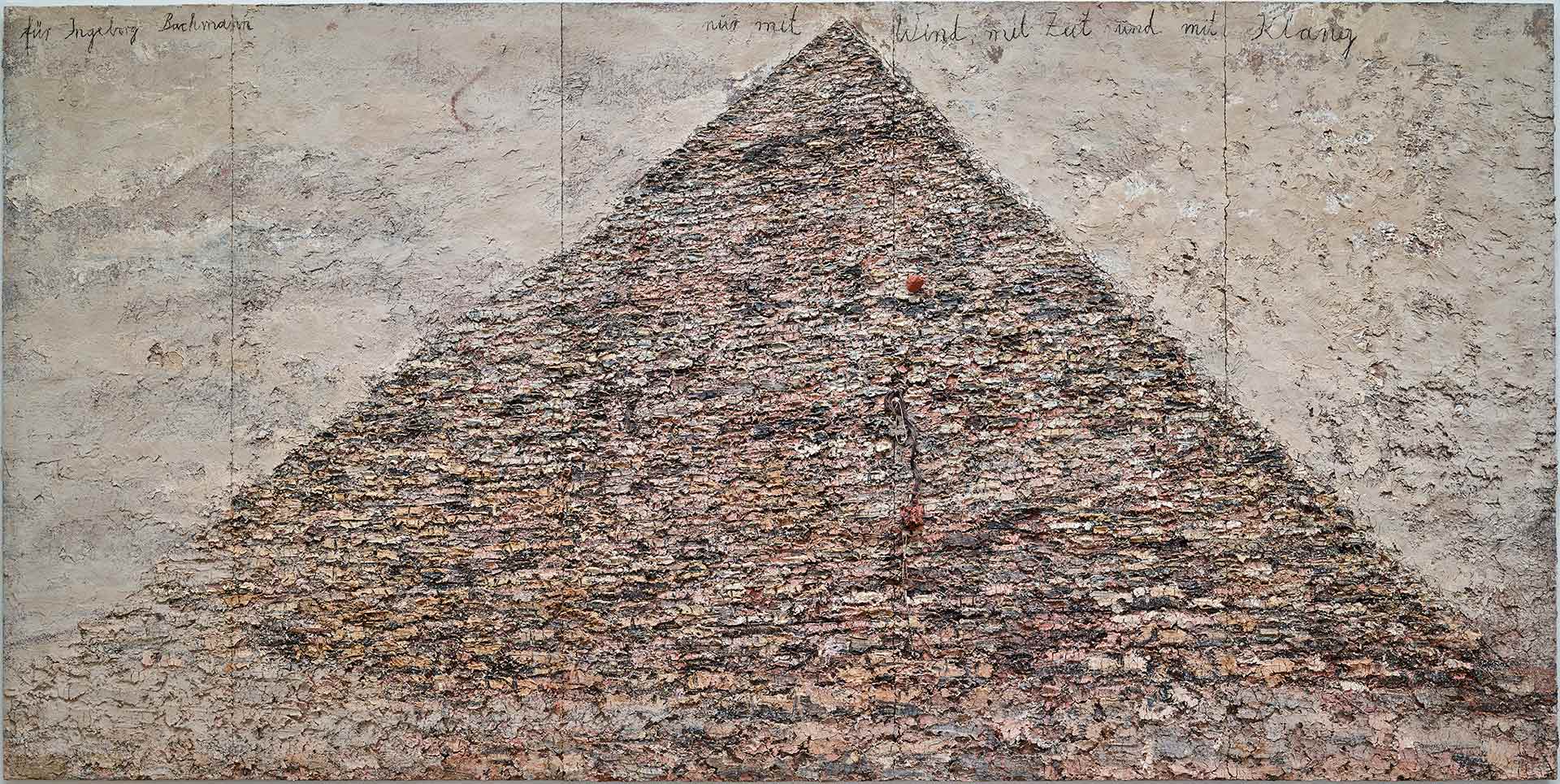Only with Wind, Time, and Sound
GALLERY 209
This section features pieces by Joseph Beuys and Anselm Kiefer, two artists of different generations whose work shares cosmogonic themes and certain formal resources.
One of Beuys’s most theatrical installations, Lightning with Stag in Its Glare (1958–85) articulates the German artist’s abiding fascination with earth, animals, and death. Although Lightning with Stag in Its Glare—completed in the year preceding the artist’s death—evinces a number of the theories and mythologies from which Beuys drew throughout his career, the significance of this complex installation may ultimately be located in his definition of “social sculpture.” Intending his work to stimulate ideas, rather than represent them, Beuys hoped to rejuvenate—or illuminate—society with the fuel of creative thought.
Kiefer is a leading representative of German Neo-Expressionism, a movement that returns to the subjective heroism and textural brushwork of German Expressionism and Abstract Expressionism. History serves as material in Kiefer’s oeuvre. He focuses on the recent history of his native Germany and that of vanished cultures, such as ancient Mesopotamia, merging the two in some cases. Kiefer’s habitually large-scale works transform into architectures in which we dwell and which dwell in us. They feature a virtually monochrome palette and are executed in a wide range of mediums, to which the artist often adds additional materials like ash, lead plates, plaster, seeds, soil, and straw. The organic merges with the inorganic, and the results are works of art whose monumental scale and rich interplay of textures enhance the solemn and transcendental nature of their content.

